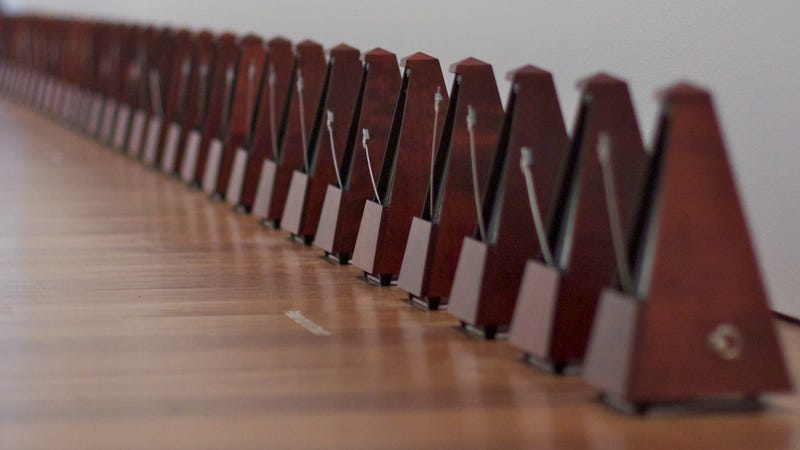
Scientists have created time crystals out of ammonium dihydrogen phosphate, a chemical commonly found in fertilizers and fire extinguishers.
Time crystals are the silly-but-sensical name for a rather simple physical concept. In regular crystals, atoms arrange themselves in lattices, so you could say that they prefer to be located in a certain point of space—space crystals. In time crystals, atoms prefer to exist in certain intervals of time. Imagine a ticking metronome. If it kept ticking even when you knocked it around or shook it, you could say it was a time crystal.
Last year, two teams announced that they’d created the long-sought time crystals. Other teams have discovered new ways that time crystals can exist, one using a relatively common chemical. These research papers are expanding the possibilities for such strange systems.
There’s a catch, though. These systems are always driven with a regular pulse of energy, so imagine if your ticking metronome had a hand tapping on the pendulum to produce every beat. That probably sounds less impressive—except in time crystals, the beat differs from the beat of the pulse. It’s as if the metronome eerily ticks twice as fast as your hand’s push.
Scientists previously created two different time crystals, one using a series of ytterbium atoms and another using impurities in diamonds caused by swapping a carbon atom for a nitrogen atom. In both cases, the “ticking” came from the regular flipping between two orientations of an inherent atomic property called spin. In a new study, Yale scientists watched the spins of phosphorus atoms in the ammonium dihydrogen phosphate crystal held in a magnetic field regularly rotate in response to (but with a different beat than) a regular radio pulse. They published a pair of papers on creating and measuring the time crystals in Physical Review Letters and Physical Review B.
Before the Yale experiment, scientists weren’t even sure that time crystals could exist in a physically ordered system, aka, regular crystals, according to a commentary in the journal Physics.
The Yale team isn’t the only group with a new time crystal, though—another group from the Indian Institute of Science Education and Research observed time crystals in a few star-shaped molecules held in liquid.
Time crystals are interesting as a new kind of matter that can only exist when the system is receiving a driving pulse of energy. Physicists are hoping to find other, even weirder kinds of matter that act in a strange way in response to this driving pulse. Even the US Department of Defense is interested. As we reported, DARPA will be funding time crystal research through their DRINQS, Driven and Nonequilibrium Quantum Systems, program. The government research agency is hoping the time crystal’s robustness will perhaps offer potential uses in GPS or elsewhere.
As a reminder, time crystals were only found for the first time last year, and these are just individual experiments, so don’t expect any world-changing applications beyond the physics lab just yet. But you can expect to see interest increase now that scientists can actually make them.
.png)

No comments:
Post a Comment